Adding Sound to Images
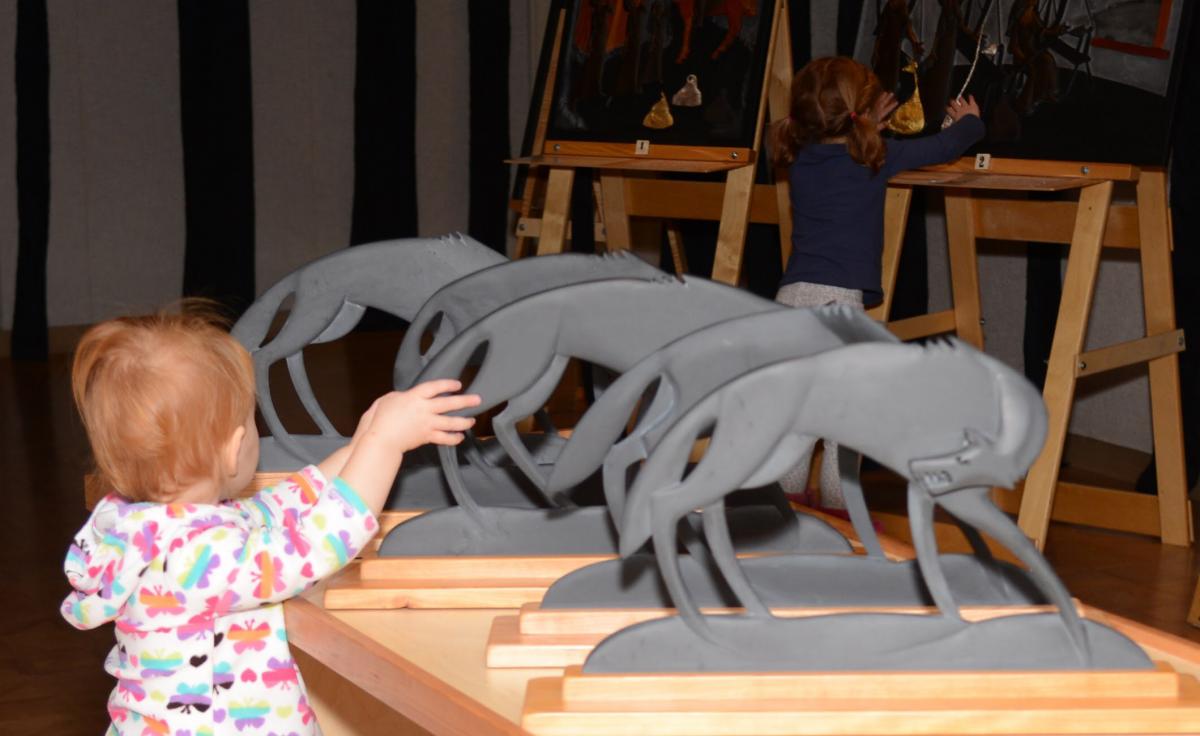 I always have print and braille labels with my artwork but sometimes being able to access audio files is preferable. I would like to share the methods I am going to be using at my next exhibit. There is a broad range of solutions. If you have some solutions of your own I would love to hear about them, too.
I always have print and braille labels with my artwork but sometimes being able to access audio files is preferable. I would like to share the methods I am going to be using at my next exhibit. There is a broad range of solutions. If you have some solutions of your own I would love to hear about them, too.
Video Transcript: Putting Sound to Images
I'm getting ready for an art exhibit and demonstration at the Denver Art Museum next week. I've been invited to talk about bas relief. "Bas" is spelled b-a-s is a French word meaning low. A coin is an example of bas relief. I'm a stone sculptor and I love to carve in slate because slate is quarried in sheets it's quite natural to create pictures in stone. The pictures led to story illustrations such as Giricoccola and into book illustrations like Sadie Can Count.
Today I'd like to talk about a few of the options that are available to connect images and audio files, so that the work can benefit, not only by making label information accessible, but artist statements and audio descriptions. We can even add music and narration. We can tell stories to set the mood to the artwork and connect important information to charts and graphs and maps and diagrams.
Livescribe Smart Pen
The next technology I'd like to share with you is going to be at the Denver Art Museum, but it will just be with this book because this needs to be pre-programmed. It's a Livescribe pen that's modified to work with images created by Steve Landau's Touch Graphics. So what you do is you have this image -- it's pretty cool -- you touch the pen to the paper and it's reading a embedded code so it will give you a lot of information. He has charts and graphs and maps illustrated. This is the internal combustion engine and it can go into a lot of in-depth information. The tectonic plates, brain, plant and we have the the tactile periodic table of elements - which has 17 different layers of information so you can keep going down, down, down, and through.
Pen Friend
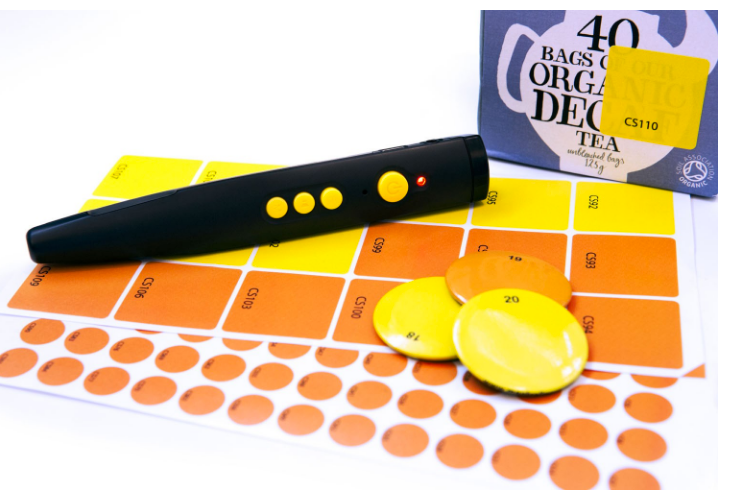 Okay, the other way we have to put sound to images is with this Pen Friend. Now this is from the Royal National Institute for Blind People and it has little dots. This is something you can do at home. So it has little dots that have code in them. You turn your pen on -- it takes a little bit to get it on. Once the blue light comes on you touch it to the little dot. [Demonstration of Pen Friend with "Sadie Can Count".] Okay, so I just did this a minute ago and I'm going to do one more for you. So I'm going to take this little dot that comes with this -- there's a whole sheet of them -- and I'm going to put the dot in the same place on every page, so that it's easy to find, and then I press the record button. "Two socks". And now when we play it back ("two socks").
Okay, the other way we have to put sound to images is with this Pen Friend. Now this is from the Royal National Institute for Blind People and it has little dots. This is something you can do at home. So it has little dots that have code in them. You turn your pen on -- it takes a little bit to get it on. Once the blue light comes on you touch it to the little dot. [Demonstration of Pen Friend with "Sadie Can Count".] Okay, so I just did this a minute ago and I'm going to do one more for you. So I'm going to take this little dot that comes with this -- there's a whole sheet of them -- and I'm going to put the dot in the same place on every page, so that it's easy to find, and then I press the record button. "Two socks". And now when we play it back ("two socks"). 
So there you go. So I'm sure you could do better than that, but it gives you an easy way to add sound to images and I'll also have it added on to some maybe artwork down there too.
Sound Cone

All right, the last thing I'd like to talk about is the sound cone, which is a down and dirty way to get some sound incorporated into your art exhibit and it's really nice to have that accessibility. What you do is you find some weavers and ask if you can have some of their thread cones. These are the cones that they wrap the thread around for weaving. Once you get that, you need to plug up the bottom and we just used some ethafoam, cut out with a pipe in the shape -- you know, in the size that we needed. Then we stuff that down into the cone.
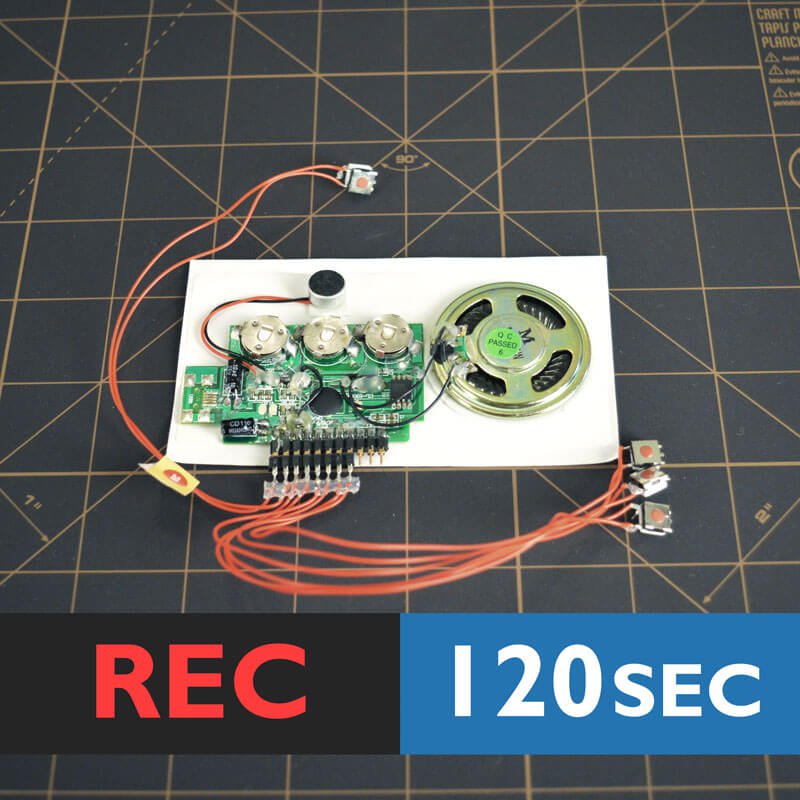 Then we ordered some recordable sound devices that are used for like greeting cards. We got these from Big Dawgs Greetings and so you record on to these devices. The first button is used for typical label information, like the artist's name and the title of the piece, the date and the materials -- whatever you want to put there -- prices. The second one we added the artist statement, and the third one we have audio description. So this way because they're uniformly -- they're put on in the same order every time -- people know what button to go to to get the information that they need. Then we put a dymo tape label on it, so that they don't get confused with one exhibit to the next and you're off and running. Here's how it sounds. [Demonstration] So it's easy to keep it fairly private by lifting it up to your ear.
Then we ordered some recordable sound devices that are used for like greeting cards. We got these from Big Dawgs Greetings and so you record on to these devices. The first button is used for typical label information, like the artist's name and the title of the piece, the date and the materials -- whatever you want to put there -- prices. The second one we added the artist statement, and the third one we have audio description. So this way because they're uniformly -- they're put on in the same order every time -- people know what button to go to to get the information that they need. Then we put a dymo tape label on it, so that they don't get confused with one exhibit to the next and you're off and running. Here's how it sounds. [Demonstration] So it's easy to keep it fairly private by lifting it up to your ear.
Okay, so all the information that you need for the links and information about these products is listed below. Please join in with ideas that you have to make your exhibits more accessible!
Links to vendors mentioned in this video:
Watch the full video below (8:33)
For more information about Ann Cunningham's work, visit http://www.acunningham.com/ and http://www.sensationalbooks.com/.
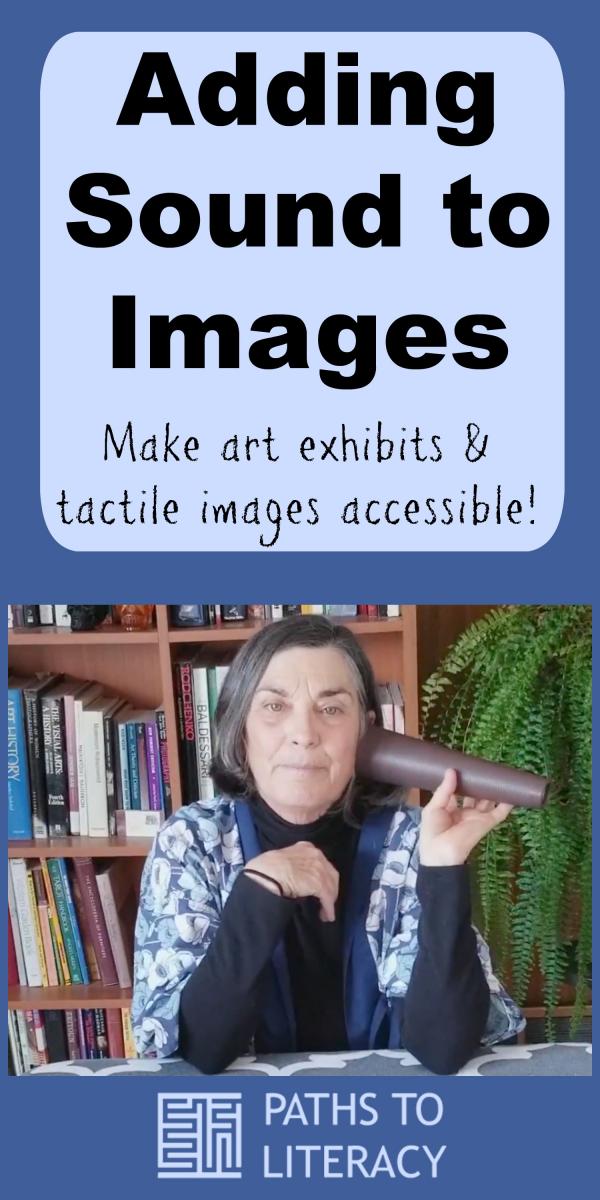

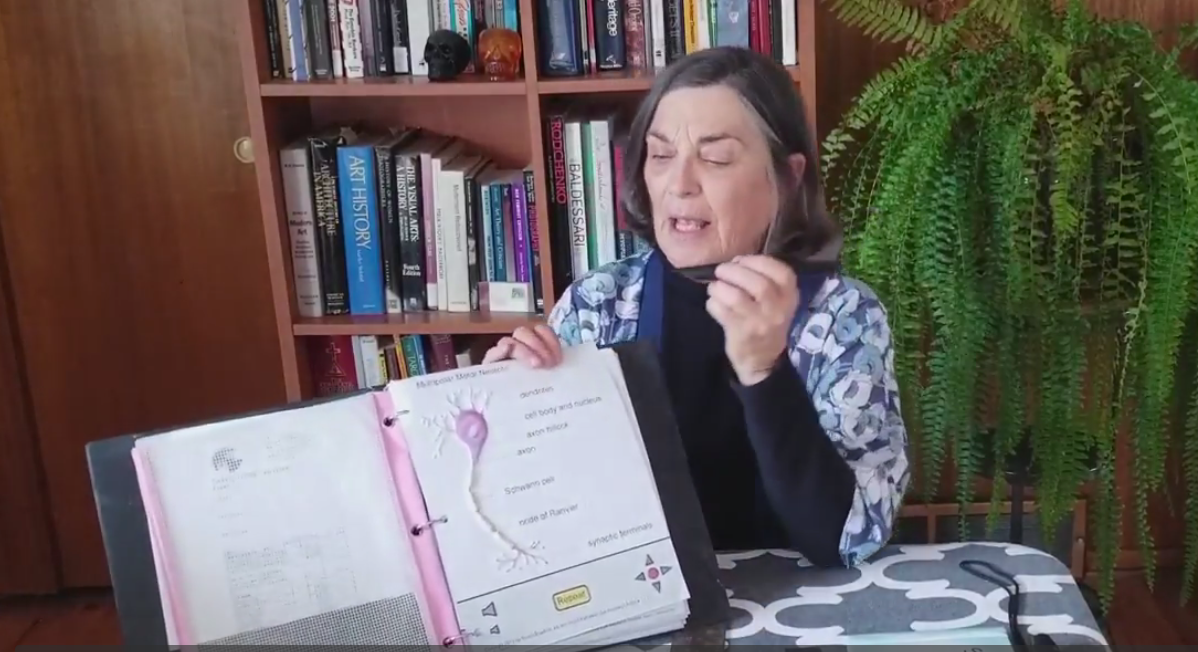
Comments
Another way to add Audio to Images
AnyBook Reader Pens